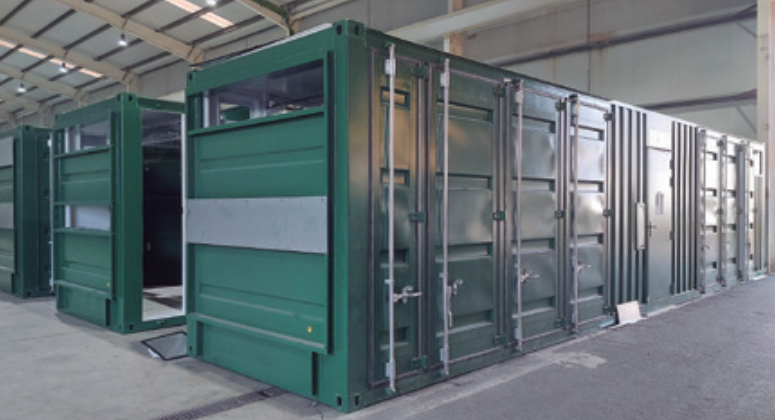
Promat, expert in passive fire protection, and Proinsener, a Spanish company specialised in the integration of containerised energy solutions, are working together to develop containers equipped with passive fire protection for battery-based energy storage systems. This collaboration seeks to respond to a solution that is increasingly sought-after by the market, and one whose aim is to mitigate the risks that lithium-ion batteries represent.
The containerised units from Proinsener, alongside the solution provided by Promat for passive fire protection, are the perfect response for utility-scale energy storage projects and can be used to integrate different storage technologies, supercapacitors, lithium-ion batteries, hydrogen solutions and hybrid technologies, as well as for different purposes.
Every storage solution is designed for the purpose of complying with the most demanding of specifications and is prepared to address every type of adverse condition. Proinsener mechanically and electrically adapts each container depending on the technology to be integrated, with the aim of achieving the perfect solution to house each technology to be installed inside the rooms and obtain a plug & play solution.
But one of the most important items when the time comes to protect these containers, is fire protection, a segment in which with different technologies, a protection system is achieved that maintains the safety of the system in the event of fire.
This is possible thanks to the contribution of Promat, who proposes the application of passive fire protection measures, such as the use of the Durasteel material to protect against explosions; the use of intumescent materials to prevent the flames from spreading outside the storage system, as well as the emission of toxic gases; in addition to the use of thin and low thermal conductivity thermal insulation products to guarantee a safe environment for the battery storage system.
Passive fire protection
Fire protection includes both active and passive measures. The latter essentially aim to limit the spread of fire, as well as structural protection and compartmentalising.
The main passive measures include:
- Fire-proof walls and roofs.
- Firewalls to prevent spread.
- Exhaust ventilation conduits and fire dampers.
- Fire resistant doors and windows.
- Spray and intumescent materials.
- Insulated and fire-proof storage units.
- Protection against explosions.
In terms of passive fire protection, two aspects must be considered: reaction and resistance to fire. The first aspect refers to the response or the behaviour of the materials to the fire, and their contribution to its development or spread, i.e., their combustibility and flammability. Depending on these two factors, the materials are classified from A1 to F.
When we are talking about fire resistance, we refer to the time during which a specific constructive system maintains certain features under standard fire conditions. In this case, the factors to consider are how the structure withstands the fire without disintegrating; if the structural integrity of the system is maintained (appearance or not of cracks and debris); and preventing thermal transfer through the barrier; in short, ensuring that the cold side does not exceed a specific temperature.
This is particularly important in the case of storage systems, given that there could be a large quantity of inflammable materials outside the storage system, such as cabling and solar inverters in the case of a storage system for a solar plant. These materials could mean that although the fire is under control inside the container, the temperature of the container wall itself might generate a new fire outside it.
In the case of fire resistance, this involves knowing how many minutes the system can withstand to guarantee evacuation and a timely response. Thus, the REI 30, 60 and 120 classification emerges in which the three criteria determine the length of time (expressed in minutes) a system is protected:
- Load-bearing ability (R) refers to the ability of a structure to preserve its structural stability when exposed to fire under specific mechanical actions on one or more sides for a period of time.
- Structural integrity (E) is assessed by looking for cracks or apertures in the structure, the ignition of cotton pads and the presence of sustained flame on the side not exposed to the fire.
- Thermal insulation (I) refers to the ability of a structure to reduce heat transfer from the exposed side to the unexposed (cold) side.